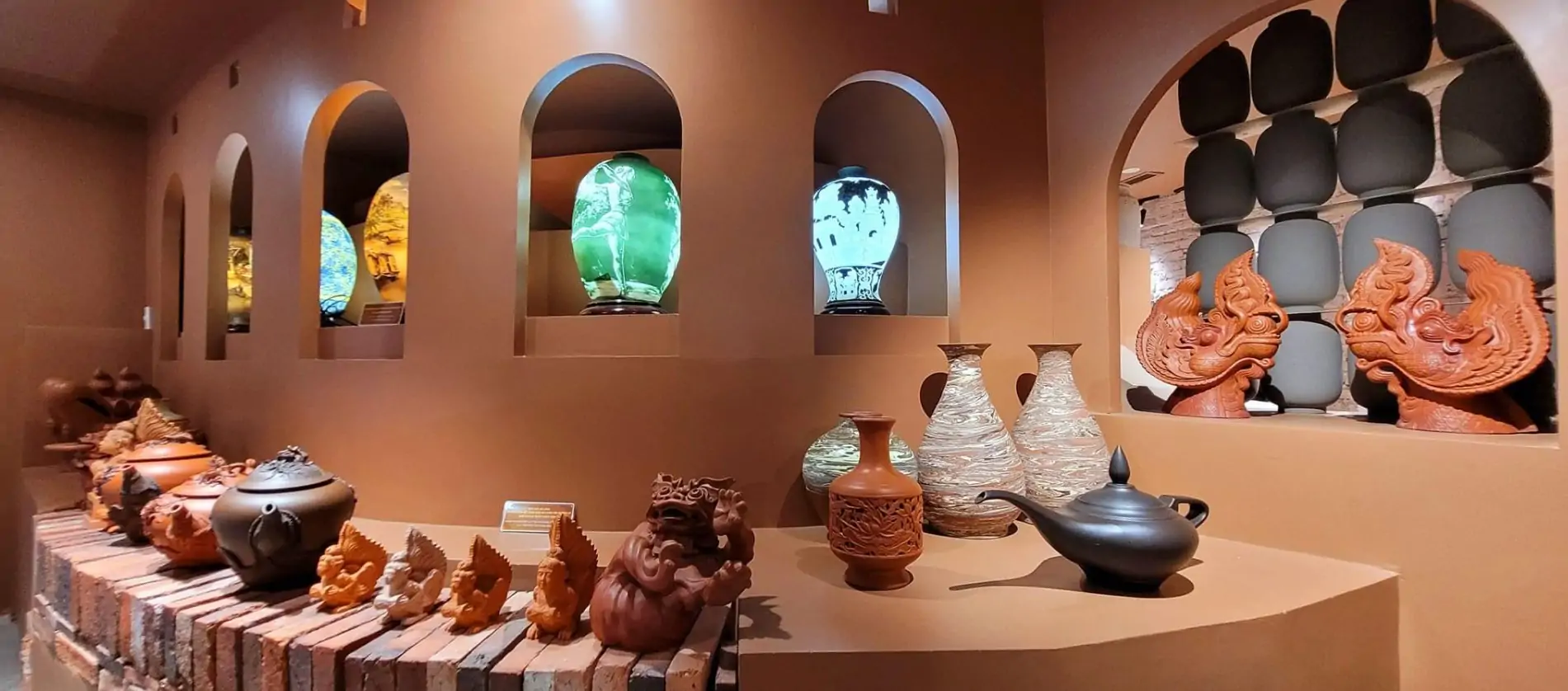Contents
ToggleA Glimpse Into Bat Trang’s History
The story of Bat Trang Pottery Village stretches back nearly a millennium, to the Ly Dynasty (11th century). According to legend, five skilled pottery families—Tran, Vuong, Nguyen, Le, and Pham—migrated from Thanh Hoa and other regions to settle along the Red River’s fertile banks. Here, they discovered an invaluable natural resource: kaolin clay, known for its purity, plasticity, and ability to withstand intense heat.
This clay, combined with their inherited firing skills, gave birth to a craft that would define Bat Trang for centuries. By the 15th and 16th centuries, Bat Trang ceramics were not only used across Vietnam but also shipped abroad via the bustling Red River trade route and later through the Pho Hien and Hoi An ports, reaching Japan, Southeast Asia, and even Europe. Elegant blue-and-white porcelain, everyday household items, and spiritual offerings alike carried the name “Bat Trang” far beyond the village borders.
Despite wars, economic shifts, and modernization, Bat Trang has never lost its essence. Walking through the village today, you can still sense the echoes of the past: the smoke of old kilns, the rhythmic sound of wheels spinning clay, and the quiet pride of families who have guarded their craft for generations. While gas and electric kilns now replace traditional wood-fired furnaces, the soul of Bat Trang lies in its seamless blend of ancient heritage and modern creativity.
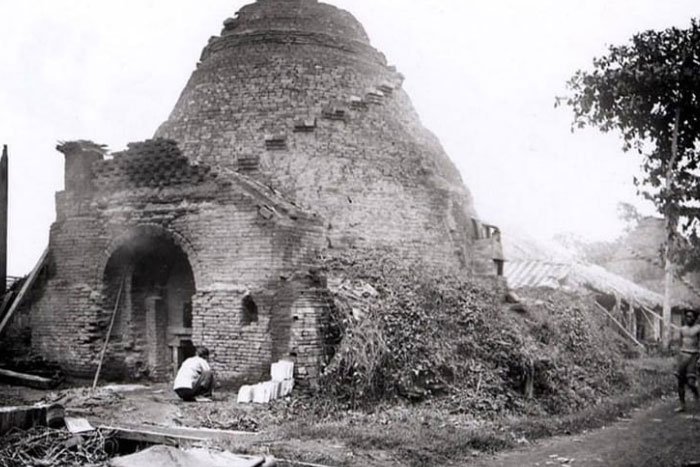
The Art of Firing and Glazing
What makes Bat Trang ceramics extraordinary is not just the clay, but the artistry in firing and glazing—two processes that transform humble earth into shimmering masterpieces.
- Firing – In the past, kilns were fueled with straw, bamboo, and later coal, requiring artisans to monitor the flames tirelessly, sometimes for days, to achieve the perfect temperature. A single miscalculation could ruin months of work. Today, modern gas and tunnel kilns allow for precision, yet many artisans still perform rituals before lighting the fire, praying for harmony between earth, water, and flame.
- Glazing – Perhaps the most mystical element of Bat Trang pottery. Families guard their glaze recipes as closely as treasures, passing them from one generation to the next. Traditional ingredients include rice husk ash, lime, and local clay, blended in secret proportions. These natural glazes give Bat Trang ceramics their distinctive finishes: glossy emerald greens, deep ocean blues, or soft ivory whites, each shimmering under the light with subtle variations no machine could replicate.
For the villagers, pottery is far more than a livelihood. It is a spiritual practice, a dialogue between humans and the elements. Many families begin their workday with a small offering of incense, asking for luck, safety, and beauty in the pieces they are about to create.
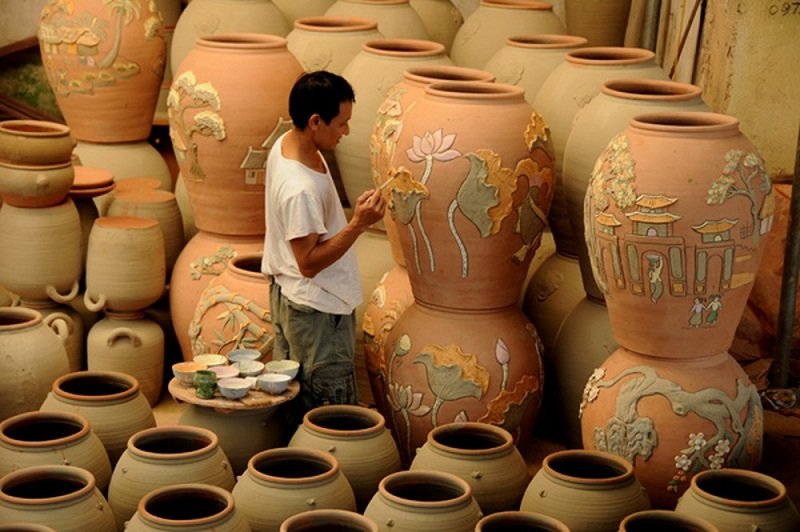
Traditional vs. Modern Pottery in Bat Trang
Bat Trang’s charm lies in how it balances centuries-old craftsmanship with modern innovation.
- Traditional methods: Clay is shaped entirely by hand on a manual wheel, with every curve reflecting the artisan’s personal touch. Imperfections are not flaws, but signs of authenticity—each piece carries a unique “soul.”
- Modern methods: Motorized wheels, improved tools, and precise kilns allow for greater efficiency, durability, and larger-scale production. These innovations help Bat Trang meet growing global demand while maintaining its artistic roots.
Together, these two approaches ensure that Bat Trang pottery is not only authentic and timeless, but also relevant in today’s world of design and export.
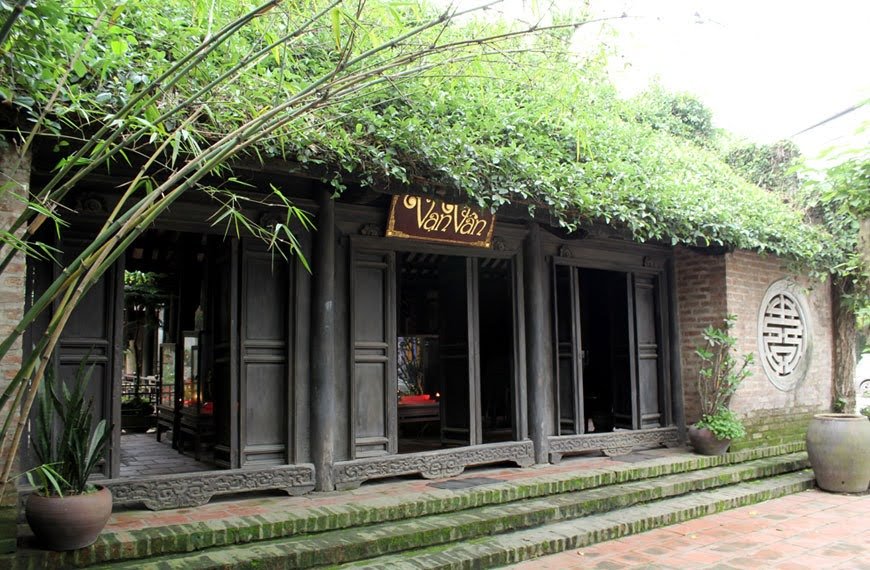
Top Things to Do in Bat Trang
- Explore the Old Village
Wander through narrow alleys lined with red-brick walls, where workshops and family homes have stood for generations. Don’t miss:
- Van Van Ancestral House – Over 200 years old, filled with antique ceramics, tools, and molds that tell the story of Bat Trang’s golden era.
- Bat Trang Village Temple – Built in 1720, still the heart of spiritual life, hosting festivals and rituals that connect the community to its craft.
- Visit Bat Trang Pottery Market
A lively bazaar where artisans sell everything from simple teacups and bowls to elaborate religious statues and decorative vases. Many stalls let you watch potters at work, offering a glimpse into the creative process.
- Experience the Bat Trang Pottery Museum
This striking modern building, shaped like a spiral clay wheel, is a must-see. Inside you’ll find:
- Exhibitions tracing Bat Trang’s history and international influence
- Hands-on pottery workshops for visitors
- Cozy cafés and scenic photo spots
💰 Entrance fees:
- Ticket: 50,000 VND
- Clay molding: 70,000 VND (adults) / 50,000 VND (children)
- Tea tasting: 40,000 VND
- Costume rental: 100,000 VND
- Combo workshops: from 189,000 VND
- Discover the Last Traditional Kiln
Once, Bat Trang had over 20 massive communal kilns. Today, only the Song Hong B kiln survives as a preserved relic. Though no longer in use since 1990, it stands as a living museum, showcasing the intense labor once required to fire pottery.
- Be a Potter for a Day
The highlight for most visitors! With guidance from artisans, you can shape clay on a wheel, glaze, and fire your own creation. At the end of the day, take home your finished piece as a truly unique souvenir.
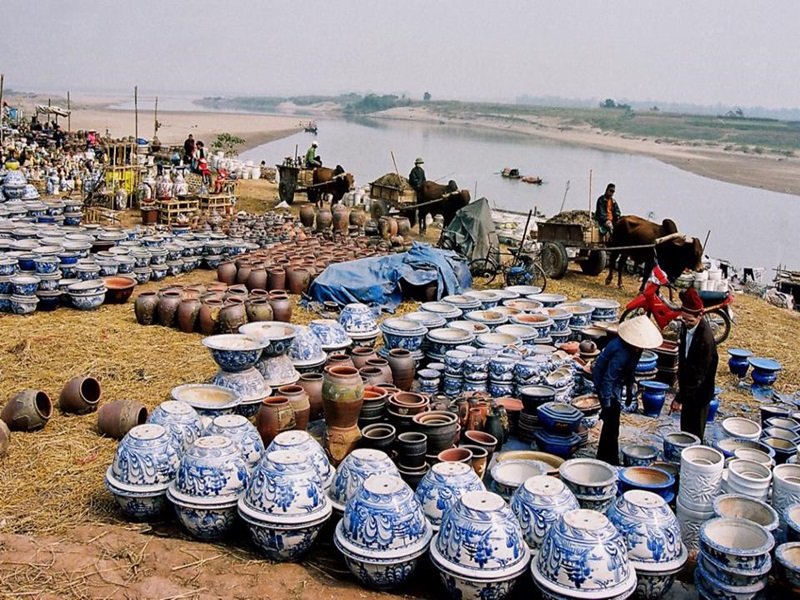
Local Food to Try in Bat Trang
A trip to Bat Trang isn’t complete without sampling village specialties:
- Bamboo shoot and squid soup (Canh măng xào mực) – a rustic, savory dish.
- Stir-fried kohlrabi with squid (Su hào xào mực) – crunchy and flavorful.
- Bach Nhat wine – a traditional herbal liquor.
- Wolf flower tea (Chè hoa sói) – soothing, with a light floral taste.
- Sticky rice with sweet soup (Xôi chè) – a comforting dessert.
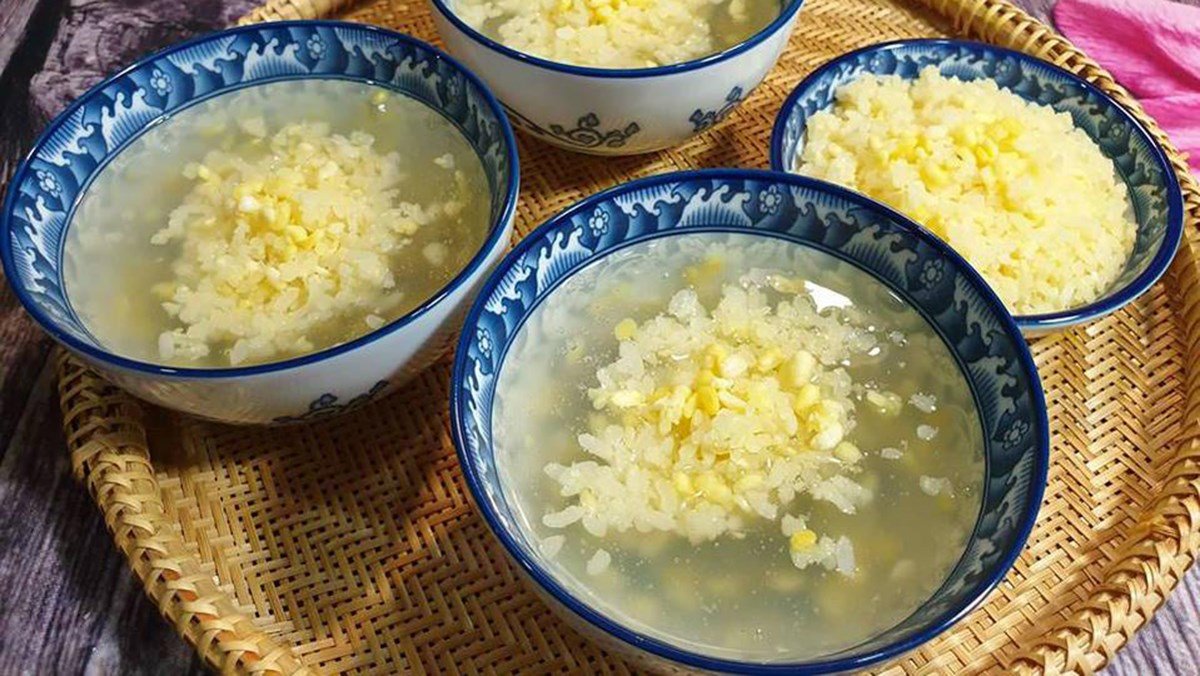
Suggested 1-Day Itinerary
- 7:45 – 8:30 am: Depart from Hanoi (around 15 km, ~30–40 minutes).
- 9:00 am: Join a pottery workshop to try shaping clay.
- 11:30 am: Enjoy lunch at a local restaurant.
- 1:30 pm: Explore the pottery market and visit Bat Trang Temple.
- 3:00 pm: Stop by the Pottery Museum for exhibitions and tea tasting.
- 4:00 pm: Return to Hanoi with your handmade souvenir.
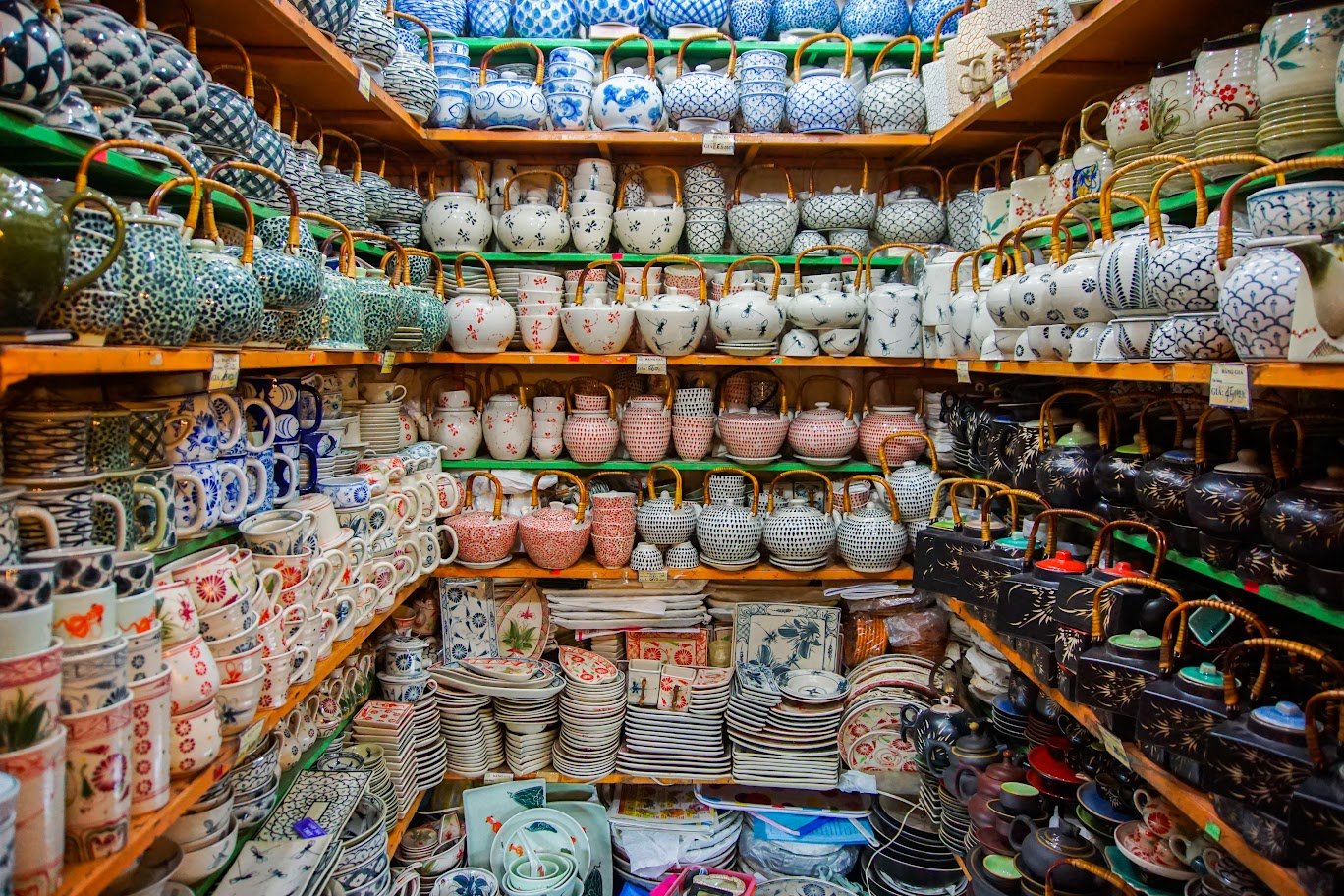
How to Get to Bat Trang
- Taxi or Private Car: The fastest and most convenient way. From Hanoi’s Old Quarter, it takes 30–45 minutes depending on traffic.
- Bus: Take Bus No. 47A from Long Bien Bus Station. It runs daily from 5:00 am – 9:00 pm, every 10–15 minutes. The ride takes about an hour and drops you near the pottery market.
- Guided Tours: Many Hanoi tour agencies offer half-day or full-day packages that include transportation, a pottery workshop, and meals—ideal if you prefer a hassle-free experience.

Practical Tips for Visiting Bat Trang
- 👟 Wear comfortable shoes – you’ll be walking on cobblestone lanes and village paths.
- ⚱️ Be cautious near displays – ceramics are fragile, and shops can be crowded.
- 👨👩👧👦 Traveling with family? Electric carts are available for easier mobility around the village.
- 🔍 Inspect items before buying – check for cracks or uneven glazing if you’re purchasing ceramics.
- 📦 Ask about packaging – most shops can wrap purchases securely if you plan to bring them home or ship them abroad.
Final Thoughts
Bat Trang Pottery Village is more than a shopping spot—it’s a place where art, history, and community spirit live on. From crafting your own clay piece to exploring centuries-old houses, a visit here immerses you in the very heart of Vietnam’s cultural identity.
If you’re in Hanoi, don’t miss the chance to step into this world of fire and clay—it’s a day trip you’ll never forget.












